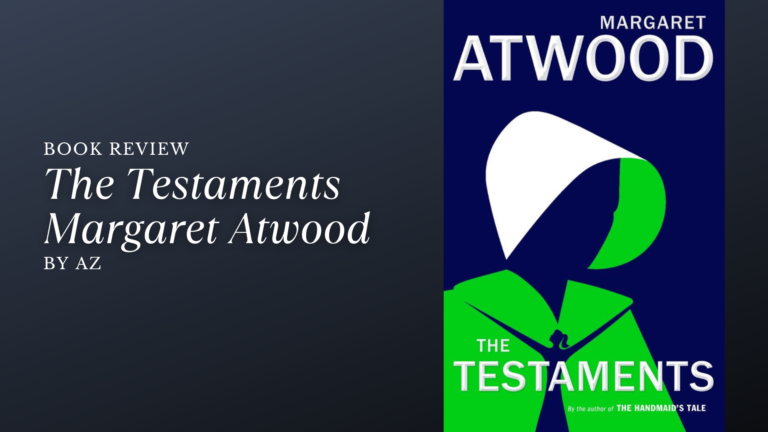Review by: AZ a reader/teacher
Though The Testaments came out in 2019, it remains a beacon of hope to the readers of The Handmaid’s Tale (1998), a dystopian novel about women (handmaids) being forced to produce children for a totalitarian regime. Of course, these women were given no choice to refuse. As soon as they became part of Gilead they lost their identity and freedom, even their names and family. Offred (June) was the main protagonist who was made to suffer the loss of her family but continued her struggle to be reunited with her child despite her imprisonment. The book ended with Offred going to a van, which ambiguously may or may not have led to her freedom.
The handmaids’ narrative was characterised by the colour red as these women wore red to distinguish them from others. In the sequel, the colour changed to green in the book cover and may be seen as a light of hope as opposed to the anger and desperation seen in red. Offred’s narrative voice is replaced by three women in The Testaments, the sequel. The most surprising one was of the villain Aunt Lydia who had made the handmaids’ lives a torment in the first book. To our surprise, we discover Lydia has many facets to her personality. Her position gave her power and the tools to bring the handmaids to heel; in reality, she also helped the handmaids, and most essentially, kept a record of all the wrongdoings in Gilead. She was the reason Agnes was able to escape, but her transformation in the sequel was intriguing. It also offers Atwood’s insight as regards the intricacies in a human being and the different steps they may be forced to take to keep themselves secure. As she says:
I know too much about the leaders—too much dirt—and they are uncertain as to what I may have done with it in the way of documentation. If they string me up, will that dirt somehow be leaked? They might well suspect I’ve taken back up precautions, and they would be right. (Chp. 12)
The second narrator, Hannah or Agnes Jemima, is the child June lost to Gilead, who has vague memories of her real parents. Her discomfort with Gilead’s policies regarding women becomes evident as she evades an unwanted marriage by joining the order of the Aunts as a supplicant. She feels secure in the atmosphere at Ardua Hall, which harbours the secrets of all the commanders. Lydia’s revelation of Nicole/Jade as her half-sister changes her focus and she readily agrees to plot against Gilead to ensure their freedom.
The third narrator Daisy or Nicole entered Ardua Hall as Jade. Daisy, a teenager from Toronto with oddly overprotective parents who ran a second-hand clothing store. Gilead was a constant topic of political conversation in her school. Ironically, Daisy wrote an essay on Baby Nicole (herself), a child who was “stolen” by her handmaid mother and taken to Canada and was regarded by Gilead as a symbol of the child they lost to evil forces. Daisy attended an anti-Gilead rally against her parents’ wishes and they died the next day. She discovered the truth about her real parents. Befriending Agnes, she decided to help the Canadian organisation Mayday to extricate her sister and take out several secret documents on the rulers in Gilead.
The sequel is a message of hope as compared to The Handmaid’s Tale which nevertheless left the audience hoping June had escaped. The protagonists are much more in control of events as compared to June. There is more systematic help available. Margaret Atwood, however, does not let her audience forget the disasters which can befall society if one gender decides to take absolute and fanatical control.
Atwood ended The Testaments with a transcript from a Gileadean studies conference long after the regime had fallen. In it, Professor James Darcy Pieixoto discussed the recently discovered manuscripts that comprised The Testaments and analysed their contents. He shared that the letters carved on a second-floor windowsill in Roosevelt Cottage (refugee centre) for escaped Gileadeans indicated Agnes Jemima and Daisy/Nicole may have stayed there for a time en route to Canada.
A lot is left to the readers’ imagination but the dystopian novel is a warning to the world to prevent claustrophobic control over lives and environment.



